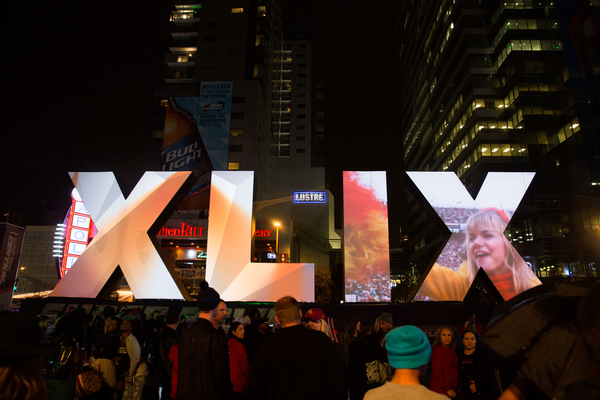Super Bowl XLIX, the 2015 Pro Bowl, and related events produced a gross economic impact of $719.4 million in the region, according to a study by the L. William Seidman Research Institute at the W.P. Carey School of Business at Arizona State University. The 2015 Super Bowl and Pro Bowl were held at the University of Phoenix Stadium in Glendale, Arizona.
“This is tremendous news for our economy and a strong testament to the exceptional work of everyone involved,” said Arizona Governor Doug Ducey. “The eyes of the world were on Arizona, and we delivered in a big way. I look forward to our state hosting many more successful championship games and major events in the future.”
The study focused nine days (Jan. 24-Feb. 1, 2015) and measured the direct amount of spending by visitors and organizations from out of state, including indirect and induced impacts from the spending. Resident and local business spending was not included.
Here are some of the findings from the study:
- An estimated 121,775 visitors came to Arizona for Super Bowl XLIX and/or the 2015 Pro Bowl; those visitors stayed an average of 3.99 nights.
- An estimated 5,033 out-of-town media members came to Arizona and stayed an average of 7.1 nights (up from 4.1 nights for Super Bowl XLII in 2008).
- The $719.4 million economic impact for Super Bowl XLIX represents an increase of 30.8 percent over Super Bowl XLII in Arizona (adjusted using the Bureau of Labor Statistics Consumer Price Index, or BLS CPI, inflation calculator which expressed that the 2008 economic impact dollars have the same buying power as $550.1 million in 2015).
Previously released data relative to the success of the events include
- Broadcast by NBC, Super Bowl XLIX was the most-watched program in the history of U.S. TV and averaged 114.4 million viewers.
- More than one million people visited Verizon Super Bowl Central in downtown Phoenix and 500,000 people enjoyed events in downtown Scottsdale during the week.
- Verizon Super Bowl Central was the first reduced waste event of its size at a Super Bowl; the Kick the Waste Initiative resulted in 73 percent diversion rate from landfill to recycling.
- 177,000 people attended the NFL Experience, a record attendance at the Phoenix Convention Center.
- On the day before Super Bowl XLIX, 126,000 people rode Valley Metro Light Rail, doubling the previous single-day high. Throughout the week, Light Rail ridership totaled 389,500 (also a record).
- Sky Harbor Airport served 175,000 passengers the day after Super Bowl, a single day record for Sky Harbor.
- Super Bowl XLIX was televised live in more than 170 countries and territories. More than 23 countries provided onsite coverage from Arizona and the game was broadcast in nine languages from University of Phoenix Stadium (Mandarin Chinese, Danish, English, French, German, Hungarian, Japanese, Portuguese, and Spanish).
- Arizona was the first host community to offer a website and social media in Spanish and to create cross-border partnerships with Mexico business and tourism entities.
- More than 100 stations broadcast live from Radio Row at the Super Bowl Media Center in downtown Phoenix.
- Legacy Grant Funds in excess of $2 million were awarded to 27 Arizona non-profits to benefit over 400,000 kids; this was made possible by sponsors of the Super Bowl Host Committee, the Arizona Cardinals and the NFL.
(Image: Super Bowl 50/Creative Commons)

